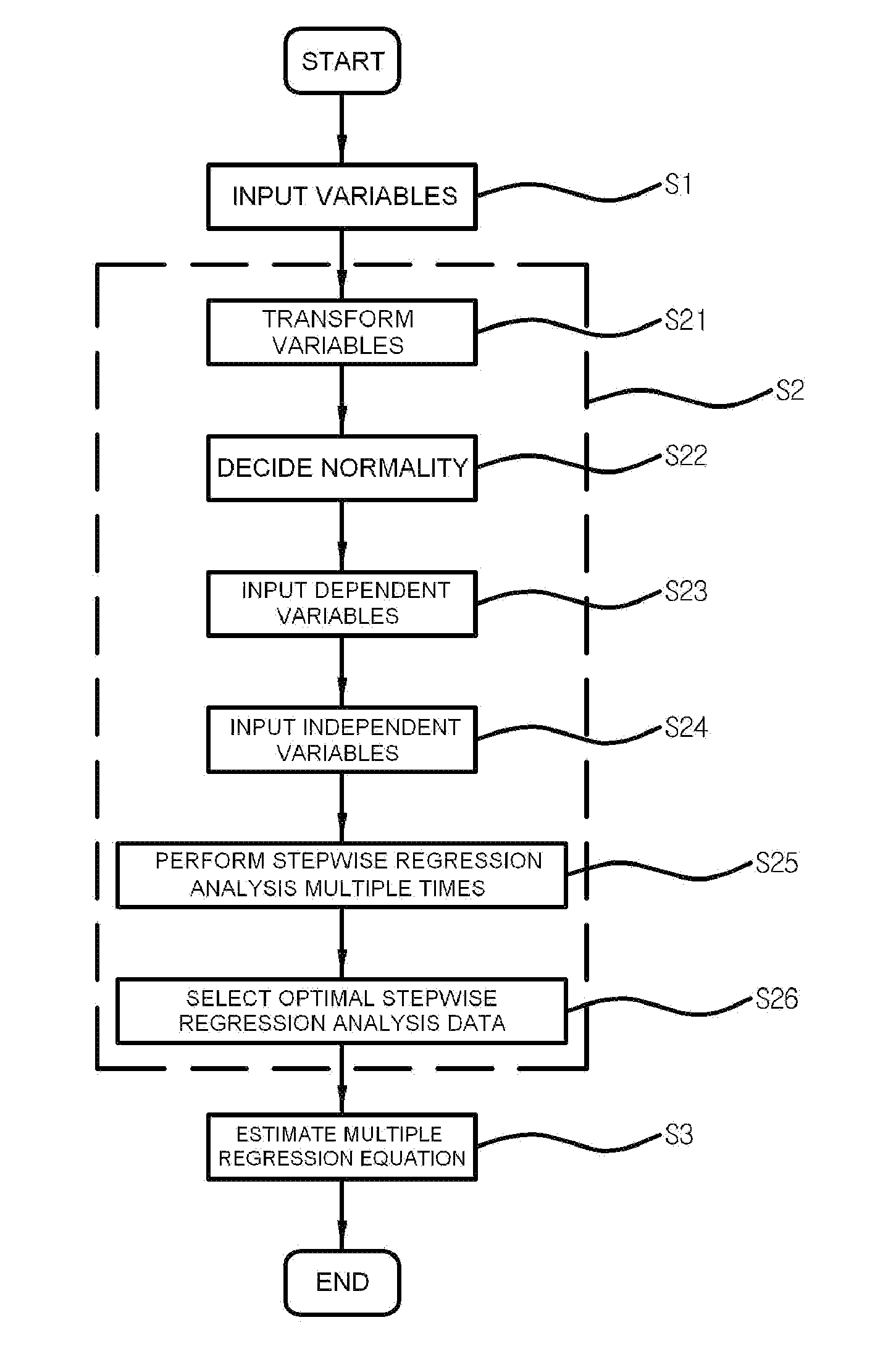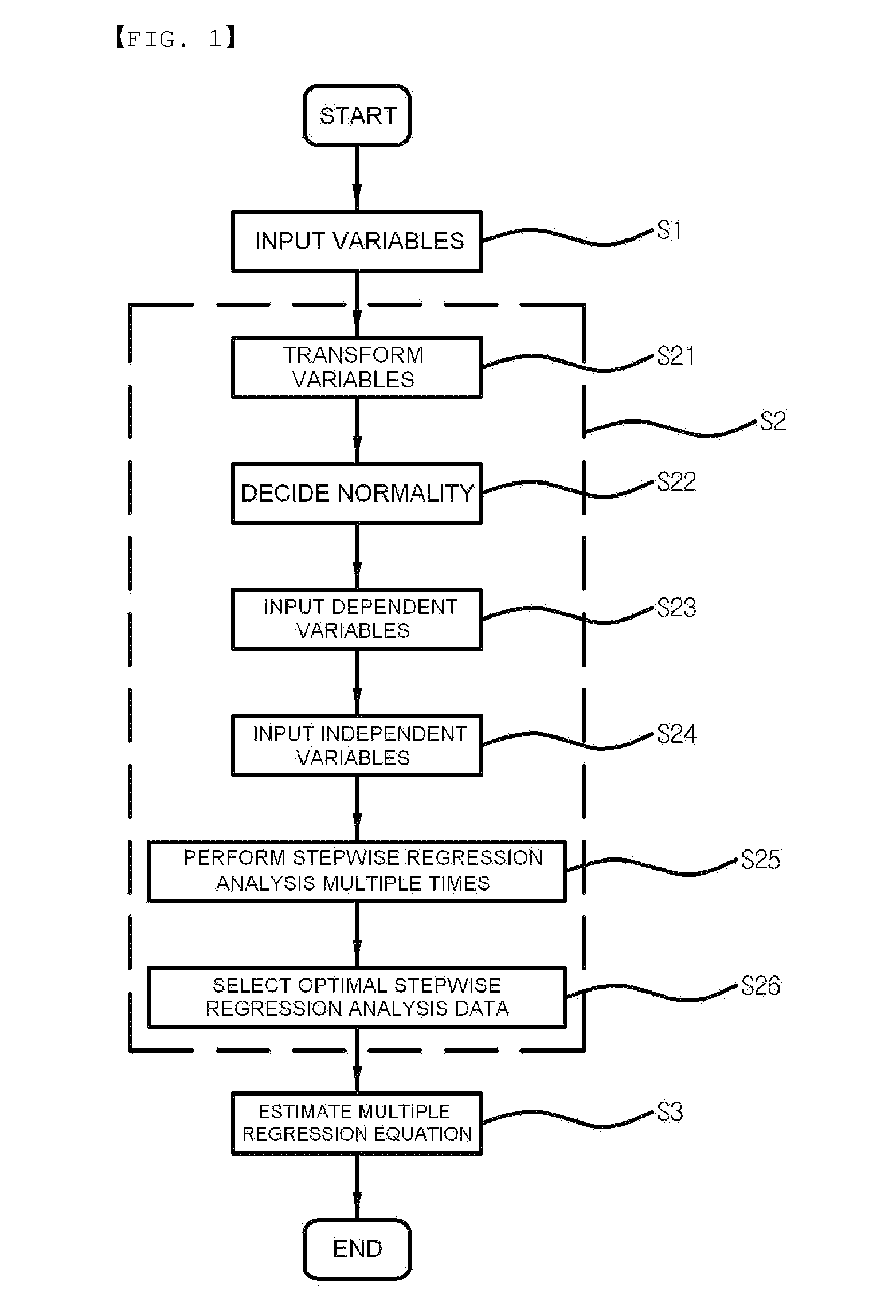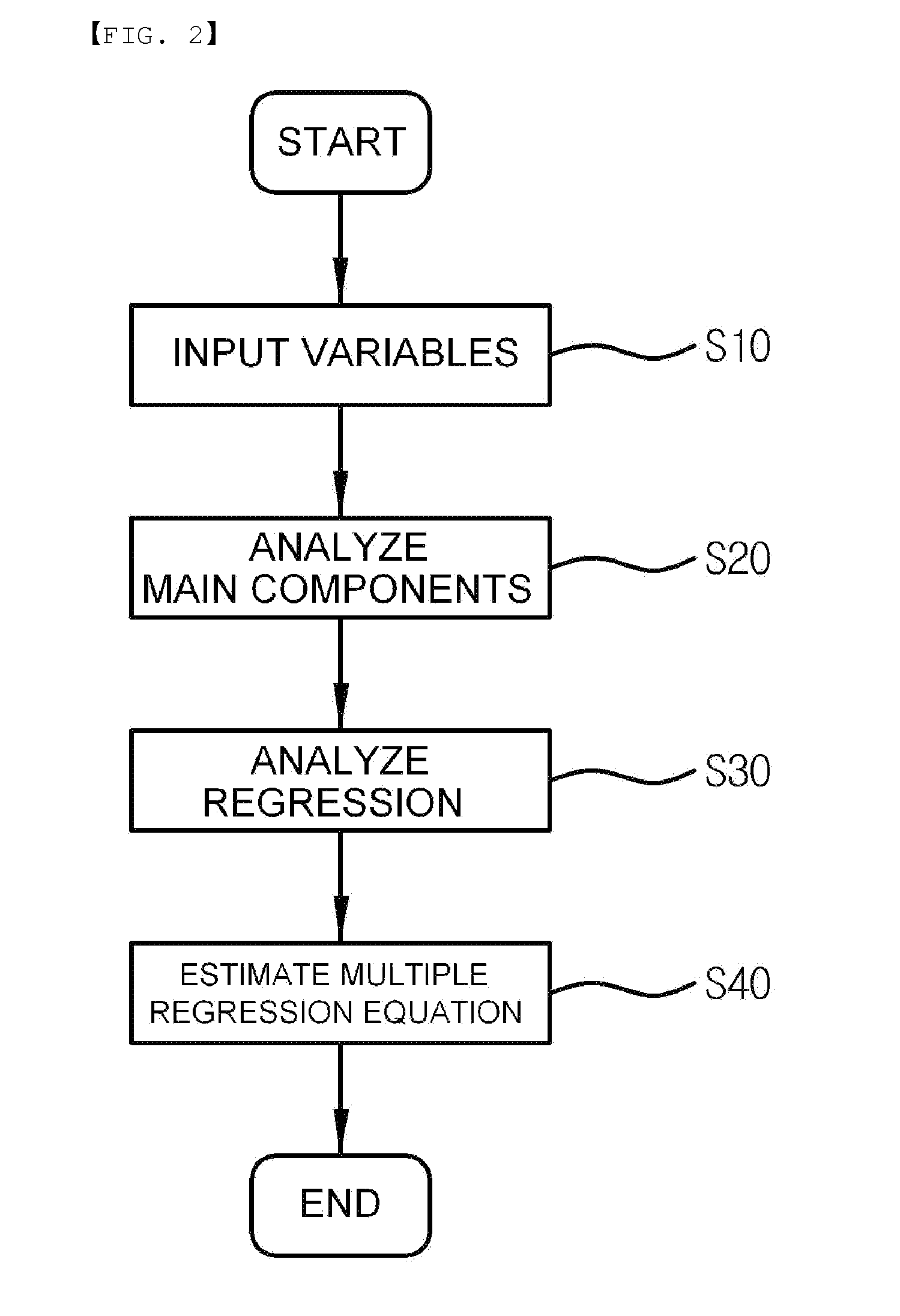Method for Predicting Wind Power Density
a technology of wind power density and method, applied in the direction of instruments, electric devices, machines/engines, etc., can solve the problem of large cost required in order to predict wind power density in any region, and achieve the effect of less cos
Inactive Publication Date: 2015-07-23
KOREA INST OF ENERGY RES
View PDF5 Cites 7 Cited by
- Summary
- Abstract
- Description
- Claims
- Application Information
AI Technical Summary
Benefits of technology
The present invention provides a method for predicting the wind power density of a location using statistical models based on reinterpretation meteorology data, terrain data, and the like. This allows for the creation of a scientific base for calculating the amount of latent onshore wind power resource and determining the optimum location for a wind power generation farm in the future. The method is cost-effective and provides an instantaneous calculating result, as compared to related art methods that require a vast amount of cost and time.
Problems solved by technology
However, since the related art in which the wind power density is calculated by calculating the numerical wind using the microscopic scale air flow model or the middle scale air flow model, such as Denmark, Related Art Document 2, and the like, requires a vast amount of computer resource and calculation time in order to analyze a governed equation of an air flow in a numerical analysis scheme, a vast amount of cost are required in order to predict a wind power density at any region.
Method used
the structure of the environmentally friendly knitted fabric provided by the present invention; figure 2 Flow chart of the yarn wrapping machine for environmentally friendly knitted fabrics and storage devices; image 3 Is the parameter map of the yarn covering machine
View moreImage
Smart Image Click on the blue labels to locate them in the text.
Smart ImageViewing Examples
Examples
Experimental program
Comparison scheme
Effect test
Embodiment Construction
of Main Elements]
[0156]S1 to S3: Method for predicting wind power density using stepwise regression analysis technique according to the present invention
[0157]no to S40: Method for predicting wind power density using main component analysis technique according to the present invention
[0158]S100 to S300: Method for predicting wind power density using neural network analysis technique according to the present invention
the structure of the environmentally friendly knitted fabric provided by the present invention; figure 2 Flow chart of the yarn wrapping machine for environmentally friendly knitted fabrics and storage devices; image 3 Is the parameter map of the yarn covering machine
Login to View More PUM
 Login to View More
Login to View More Abstract
Provided is a method for predicting a wind power density. More particularly, provided are a method for predicting a wind power density using a stepwise regression analysis technique capable of estimating a wind power density at any point using a regression analysis technique by a stepwise variable selection method of performing an analysis while adding statistically important terms or removing statistically meaningless terms.
Description
TECHNICAL FIELD[0001]The present invention relates to a method for predicting a wind power density.[0002]More particularly, first, the present invention relates to a method for predicting a wind power density using a stepwise regression analysis technique of providing a regression model capable of estimating a wind power density at any point using a stepwise variable selection technique of performing an analysis while adding statistically important terms or removing statistically meaningless terms, as a method of selecting variables that are to be used in a multiple regression analysis using a linear relationship between variables belonging to a data set. Second, the present invention relates to a method for predicting a wind power density using a main component analysis technique of providing a linear regression analysis model capable of estimating a linear relationship with a wind power density, which is an output variable, by classifying input variables into a plurality of main c...
Claims
the structure of the environmentally friendly knitted fabric provided by the present invention; figure 2 Flow chart of the yarn wrapping machine for environmentally friendly knitted fabrics and storage devices; image 3 Is the parameter map of the yarn covering machine
Login to View More Application Information
Patent Timeline
 Login to View More
Login to View More Patent Type & Authority Applications(United States)
IPC IPC(8): G01R21/133H02J3/38G01W1/10
CPCG01R21/133H02J3/386G01W1/10G01W1/00F05B2260/821Y02E10/76
Inventor KIM, HYUN-GOOLEE, YUNG-SEOP
Owner KOREA INST OF ENERGY RES
Features
- R&D
- Intellectual Property
- Life Sciences
- Materials
- Tech Scout
Why Patsnap Eureka
- Unparalleled Data Quality
- Higher Quality Content
- 60% Fewer Hallucinations
Social media
Patsnap Eureka Blog
Learn More Browse by: Latest US Patents, China's latest patents, Technical Efficacy Thesaurus, Application Domain, Technology Topic, Popular Technical Reports.
© 2025 PatSnap. All rights reserved.Legal|Privacy policy|Modern Slavery Act Transparency Statement|Sitemap|About US| Contact US: help@patsnap.com



